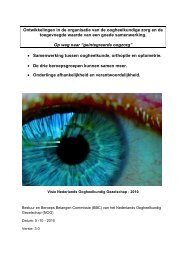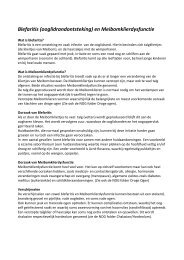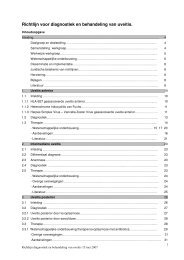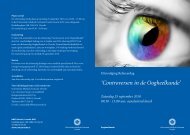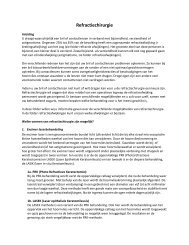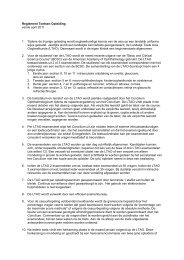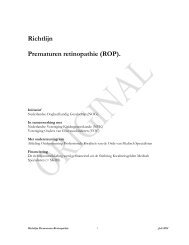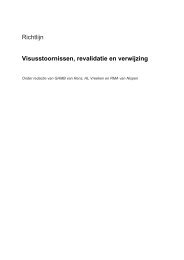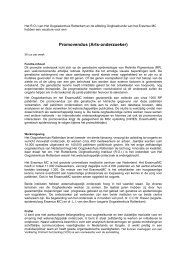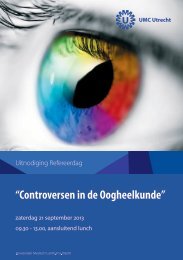terminology and guidelines for glaucoma ii - Kwaliteitskoepel
terminology and guidelines for glaucoma ii - Kwaliteitskoepel
terminology and guidelines for glaucoma ii - Kwaliteitskoepel
Create successful ePaper yourself
Turn your PDF publications into a flip-book with our unique Google optimized e-Paper software.
2.2.7 - OCULAR HYPERTENSION (OH)<br />
Etiology: Unknown<br />
Pathomechanism: Unknown<br />
Features:<br />
Signs <strong>and</strong> symptoms:<br />
Peak IOP > 21 mm Hg without treatment (diurnal curve)<br />
Visual field: normal<br />
Optic disc <strong>and</strong> retinal nerve fibre layer: normal<br />
Gonioscopy: open anterior chamber angle (exclude intermittent angle-closure. See Ch. 2.4.3)<br />
No history or signs of other eye disease or steroid use.<br />
Other risk factors: none<br />
High IOP is associated with, but not proven to be causal of vein occlusion, especially in patients with high blood<br />
pressure, hypercholesterolemia or obesity.<br />
Consider corneal thickness if findings do not match. See Ch. 1.1<br />
Although in the past it has been used as a diagnosis <strong>and</strong> still is usually separated <strong>for</strong> research <strong>and</strong> classification<br />
purposes, the term ocular hypertension (OH) should be used just to indicate that the IOP is<br />
consistenly outside two st<strong>and</strong>ard deviations from the normal mean, with all other ocular findings<br />
within normal limits.<br />
Ch. 2 - 8 EGS



